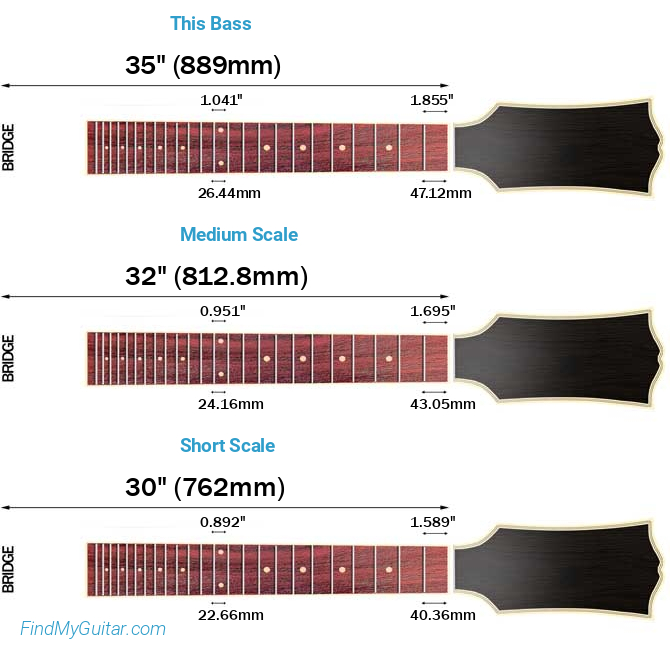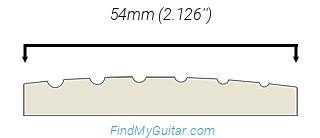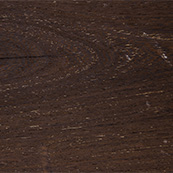Ibanez BTB1836 Overview and Best Prices
- 1 Prices - New from $1,899.99 >
- From Ibanez's 2021 BTB series
- Made in United States
- 6 strings
- 35"'' scale
- 37.402" Fretboard Radius
- Bubinga top
- Ash wing body
- 9pc Maple/Bubinga/Panga Panga w/Graphite reinforcement rods neck
- Bound Panga Panga fretboard
- Bridge pickup: Aguilar DCB (Humbucker/Passive)
- Neck pickup: Aguilar DCB (Humbucker/Passive)
- 1 volume and 1 tone Dome knobs
- 3-way Switch
- MR5S bridge
- Bass BTB6 Neck-Through neck
- 24 Medium Stainless Steel frets
- Gotoh machine heads tuners
- Weight between 10.25lbs (4.6kgs) and 10.875lbs (4.9kgs)
- See all specs and compare >
Our Scores and Tone Evaluation
- Heavy Metal
- Hard Rock
- Jazz
- Blues
- Funk
- Country
Ibanez BTB1836
- Stainless Steel Frets
- Made in United States
- Expensive Wood
- Neck-Through Build
- Active/Passive Preamp
- No Locking Tuners
- No High-Quality Nut
- No Top Brand Pickups
- No Push Knob or Extra Switch Option
- No Weight Relief
- No Luminescent Inlay
- No Compound Radius Fretboard
- No 21:1 Tuner Ratio
- No Retainer Bar
- No Strap Lock
Price Overview
Its average competitor's price is $1900, which means that the Ibanez BTB1836 is within the average price asked for this kind of bass. This takes into account all instruments of the same category in our database with 6 strings and Fixed bridge that are made in United States.
These are affiliate links. We may earn a fee if you purchase after clicking. These prices are prone to error. Make sure you're buying the right product after clicking on a link from our site. We are not liable if you buy the wrong product after following these links. As an Amazon Associate site we earn from qualifying purchases.
User Feedback
Not all instruments are created equally. That's why it's important to have different opinions. Here's what our users who have played this instrument say. If you've played it before, help others by voting below!
Weight
VoteTuning stability
VoteNeck speed (thickness)
VoteNeck access to high frets
VoteNeck profile shape
VoteFret edges
VotePickups noise
VotePickups power
VoteUser Reviews
Videos










Playability
The Ibanez BTB1836 meets 3 out of our 6 criteria items for beginner friendliness, which means that it's not bad for beginners, but it could be better. This takes into account the type of frets, scale length, nut width, bridge type, fretboard radius, and neck profile to determine the easiest combination for new players to get used to.
New Player Friendliness
Ibanez BTB1836- Comfortable shape
- Tall frets
- Comfortable neck
- Comfortable fretboard
- Narrow nut
- Short scale
Hand Size Comfortability
After taking into account the neck profile, scale size, fretboard radius, and nut width, we can conclude that the Ibanez BTB1836's construction favors people with relatively small hands.
Nevertheless, this comes down in the end to personal preference. Make sure you test this bass—or another one with similar characteristics—before buying.
How Lightweight is it?
We found that the Ibanez BTB1836 weighs between 10.25lbs (4.6kgs) and 10.875lbs (4.9kgs). This was recorded from some online retailers that publish the weight of the instruments they sell.
Scale Length
Scale length is the distance the strings will span between the bridge and the nut. It can tell you a lot about the overall playability and tone of the instrument. A longer scale length means longer distance between frets, brighter tone and more string tension—which means lower action, but more difficult bending of the strings.
Here's the Ibanez BTB1836's 35" scale length compared to other common sizes:

This is considered a long scale bass, and it's the most popular choice for several reasons. Even though it might be more difficult to play than short scale basses due to their increased string tension, their punchier low-end results in a clear and defined bass tone that can cut through in a mix, making them well-suited for genres like rock, metal, and funk.
Neck Profile

The neck profile tells you the thickness (neck depth) and shape in cross section. Every difference will completely change the feeling and comfortability of the neck. This is a highly subjective thing, but most players indeed prefer certain types of necks (like Cs and Ds) because they feel nice in most hands.
The Ibanez BTB1836's neck thickness is approximately 0.787'' (20mm) at the first fret, and 0.866'' (22mm) at the twelfth.
These measurements were taken either from the official Ibanez website, or, in case this information wasn't provided, by researching multiple online marketplaces and forums where owners of this model have posted their measurements.
It has a C type neck. C-shaped necks like this have been the most popular for the last years. The reason is that they feel good in most hands. It's generally a thin neck that doesn't get in your way when playing fast, but that also has enough mass to give your hands a comfortable grip for chords if they aren't too big.
Thin necks like this make it easier to move your hand across the neck and it helps when playing fast solos, especially if you like to leave your thumb free while playing high on the fretboard. However, thinner necks are also weaker and will need adjustment more often than a thicker neck.
Fretboard Radius
When it comes to fingerboard radius, personal preference will dictate which one is better for you. However, most people seem to agree that a more curved (lower) radius will make it easier to play chords while a less curved (higher) radius is better for soloing and bending.
The Ibanez BTB1836 has a 37.402" fingerboard radius.
Here's an image comparing this fretboard radius to other popular choices:

This is as flat as it gets when it comes to fretboard radiuses. This is used exclusively on 9-string guitars because they need a huge fingerboard to fit all the thick strings. It's not really possible to build a curved fretboard for these guitars.
Compound radius fingerboards give the best of both worlds. Unfortunately, the Ibanez BTB1836 has the same radius across the board.
Nut Width

The Ibanez BTB1836 has a nut width of 54mm (2.126''). This is within the most common range of nut widths for a 6-string bass. This is what most players find as a balanced width for both playing chords and single notes across different strings. If you have an "average" hand size, or you're not sure what nut width you'd like, this is a safe bet.
Frets
The Ibanez BTB1836 has 24 frets. A lot of people mistakenly believe that having more frets will always be better because it gives you a higher octave. This is certainly an advantage, but there's also a disadvantage to this.
Since the fretboard will be longer, the neck pickup will need to be placed closer to the bridge. And as you may know, the further away the neck pickup is from the bridge, the warmer it sounds. This means you'll have a brighter-sounding neck pickup when using a 24-fret bass, even if you use the same pickup on a 22-fret bass.
Finally, these are stainless steel frets. They're the best fretwire available. This means you won't need to change your frets since they should last as long as your bass. Some people also feel easier bendings after swapping to stainless steel.
Fret Size

Finally, let's talk about fret size. Some people prefer tall frets because it's easier to press the strings and perform bends since there's less friction against the fretboard. On the other hand, some people like shorter frets because they like to touch the fretboard when playing, or because they got heavy hands and tend to press too much on the string and alter the of the note pitch accidently.
The Ibanez BTB1836's frets are Medium size. With medium frets, you can feel the fretboard more than with jumbo frets, but it's still easier to press the strings cleanly than with small frets; notes might change their pitch just slightly if you press hard on the fret. Also, if you need to do some fret leveling after years of playing, you'll have some room to sand them down without having to replace them.
Playability Score
Tone
Wood will have little influence in the final tone of an electric guitar or bass. Instead, the hardware, especially the pickups, will be the most important thing to look at. Bur first, let's see the quality of the wood.
Wood



Ash Body: The most popular Ash wood for guitars is swamp Ash. It has a really light color with beautiful patterns, which makes it perfect for a natural-looking finish. It's not as lightweight as Alder, but also not as heavy as Mahogany. It's known for producing a bright tone with solid mids and lows.
Maple Neck: This is one of the most popular types of wood used in all kinds of guitars. It's heavy, strong and compact, which makes it great for necks. However, it's also used for fretboards, bodies and tops due to its light color, resistance and beautiful patterns. When it comes to tone, it highlights the mid and high frequencies.
Panga Panga Fretboard: It's an African wood often confused with Wenge. It has a dark color with tight grain with a tone that emphasizes mids and lows.
Pickups
Unfortunately, it doesn't come with pickups from one of the top brands. This doesn't mean you will get bad pickups, but you might want to consider a pickup upgrade after some time.
These are passive pickups, so you can expect a rounder sound and a moderade level of output.
Preamp
The preamp is an electronic circuit that serves as an intermediary between the bass's pickups and the amplifier. Its primary function is to boost and shape the bass's raw signal before it reaches the amplifier. This allows for greater control over the bass's tone, volume, and other sound characteristics. Preamps often include tone controls, equalization settings, and sometimes even onboard effects, enabling bassists to tailor their sound to their preferences and the musical context.
This bass has a Active/Passive preamp. This means it combines both passive and active electronics in one instrument. This versatile setup allows the player to switch between passive and active modes, providing a wide range of tonal options. In passive mode, the bass relies on traditional passive pickups and tone controls for a warm and organic sound. In active mode, the onboard preamp circuit is engaged, offering enhanced EQ shaping capabilities and sometimes a signal boost. This flexibility caters to a broader spectrum of musical styles and playing preferences, as it allows the bassist to switch between the classic, vintage tone of passive operation and the more versatile and finely tuned active mode, all within the same instrument.
The Ibanez BTB1836's configuration is HH. With this pickup combination, you'll get warmer tones and more output than using single coils. Humbucker pickups cancel the noise that single-coil suffer from, which also results in a warmer tone. This pickup combination isn't only for high-gain music like Hard Rock or Heavy Metal. Their warmness is also popular for Jazz, Indie, R&B, Blues and more.
More with the same pickups
Versatility
It comes with the popular 3-way switch that is present in most guitars. For more versatility, players tend to prefer a 5-way switch, although it all depends on what you want to use your bass for.
Unfortunately, it doesn't come with more options for coil split or coil tapping. This makes it less versatile than some competitors.
Diagram

What music genre is it good for?
As a 6 strings, Solid Body bass with HH configuration and Passive pickups, we'd recommend it for genres like Heavy Metal or similar. However, you can use almost any bass for any genre. This is just the typical type of music for this particular one.
Sound Score
Build Quality
Country of Origin
Knowing where the instrument is produced is a good way to know how well it's built. Some manufacturing countries are known for having higher quality standards. For example, most expensive instruments are made in the US or Japan, but there are some exceptionally great countries—like South Korea—that are building a good reputation.
The Ibanez BTB1836 is made in United States. Guitars made in the USA have the reputation of being the best instruments you can get. This statement isn't as accurate as a few years ago, but you should still expect top-quality from a guitar made in this country.
Bridge
MR5S: The advantage of fixed bridges is that they don't require any kind of set-up. This makes it extremely easy when changing strings because you don't need to adjust anything besides tuning the guitar. Also, the fact that the bridge is directly attached to the body will help to increase sustain. The disadvantage is the lack of versatility since you can't create the same vibrato effects as with tremolo bridges.
Nut Material
Another important thing to analyze is the nut material, as it's one of the most important aspects that can affect the sound and playability of your bass. A well-cut nut will make sure it stays in tune and will make it more comfortable to play.
In this case, the Ibanez BTB1836 has a Plastic nut. This is a low-quality nut that you might want to consider upgrading soon. Bone and TUSQ nuts are the best for guitars with a fixed or simple tremolo bridge.
Neck Joint
The neck joint is the part where the neck of the bass meets the body. There are three main techniques to attach both parts together: Set-In, Bolt-On and Neck-Through. The latter two provide different advantages, although neck-throughs are the most expensive.
This bass has a Neck-Through neck joint. Many people believe a neck-through build delivers the best sustain because some of the vibrations from the neck aren't lost like with other neck joints. However, no one has been able to prove this. What we know is that a neck-through build is usually the most comfortable when playing the upper frets because there's nothing on your way at the neck-body joint.













